 by "ttyymmnn" (ttyymmnn)
by "ttyymmnn" (ttyymmnn)
Published 09/12/2017 at 12:35
 by "ttyymmnn" (ttyymmnn)
by "ttyymmnn" (ttyymmnn)
Published 09/12/2017 at 12:35
Tags: Planelopnik
; planelopnik history
STARS: 10
Welcome to This Date in Aviation History , highlighting milestones, important historical events and people in aviation and spaceflight from September 9 through September 12.
!!! UNKNOWN CONTENT TYPE !!!
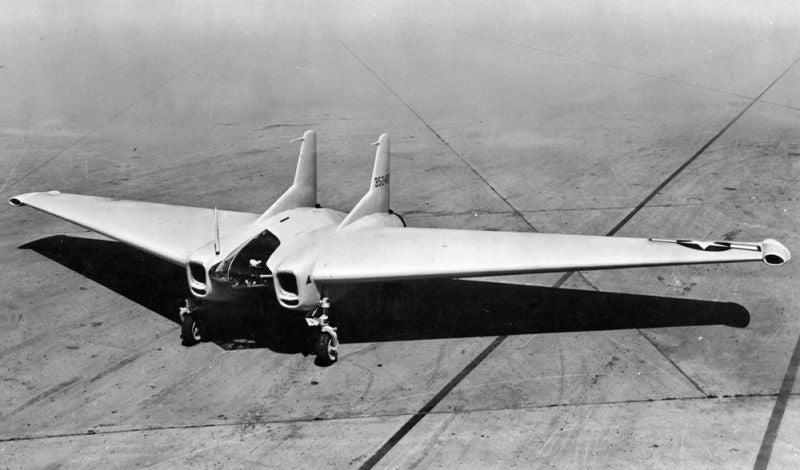
September 12, 1945 – The first flight of the Northrop XP-79. In many ways, the evolution of aircraft design has been an unending quest for speed. No matter how powerful the engine, piston-powered propeller planes can only go so fast (the official record as of today is 528.31 mph), and it wasn’t until the arrival of the jet engine that aircraft began to climb reliably above 500 mph. But before the first operational jets took to the air during WWII, aircraft designers experimented with rocket power. The German Heinkel He 176 first flew in 1939, and continuing work on rocket propulsion in Germany led to the Messerschmitt Me 163 Komet , the only rocket-powered aircraft ever to become operational. America came to rocket power a bit later, but beginning in late 1942, Jack Northrop began work on a rocket plane of his own. Unlike the German aircraft, though, his would be a radical flying wing aircraft, a design that would later come to be synonymous with Northrop. By 1944, he had constructed prototype gliders to test the flying wing concept, one of which, the MX-324, became the first US-built rocket plane to fly when it was towed aloft by a Lockheed P-38 Lighting . With the flying wing concept proven, Northrop received an order for three flying prototypes that were given the designation XP-79A. In addition to its radical design, the XP-79A also broke new ground in construction techniques. Due to the corrosive nature of the liquid rocket fuel, Northrop constructed the fuselage out of a magnesium alloy which required the development of new methods of welding to work with the exotic material. The aircraft was so small that the pilot flew the plane from a prone position, with his chin placed in a rest to hold his head up. While this was not the most comfortable position, it did allow the pilot to withstand up to 21 Gs in flight.

Just two months after the order was placed for the rocket planes, the decision was made to substitute two Westinghouse 19-B (J30) turbojets for the rockets, with the jet-powered version given the designation XP-79B. The magnesium construction of the airframe made for a very strong aircraft, and some thought was even given to employing the XP-79B as an aerial battering ram, using the aircraft’s wings to slice the wings and tails off of enemy bombers. A more traditional armament of four .50 caliber machine guns was also planned though never fitted. Ground testing proved troublesome, with burst tires and brake problems plaguing the taxi tests. Once those were worked out, the XP-79B made its first and only flight. Test pilot Harry Crosby took the XP-79B aloft and reached an altitude of 7,000 ft. However, the flying wing then started to roll for an unknown reason, and Crosby was unable to regain control. He managed to bail out of the aircraft, but died when he was struck by the wing and was unable to open his parachute. The XP-79 crashed and was consumed by a raging fire fueled in part by its magnesium structure. Soon after the crash, construction of the second XP-79B prototype was halted, and the entire program was cancelled. Despite the setback, Northrop continued his experiments, and some may say obsession, with flying wings, developing the YB-35 and YB-49 flying wing bombers, neither of which ever entered production. However, Northrop’s vision was eventually vindicated in 1989 with the flight of the Northrop Grumman B-2 Spirit strategic bomber. (US Air Force photos)
!!! UNKNOWN CONTENT TYPE !!!
!!! UNKNOWN CONTENT TYPE !!!
!!! UNKNOWN CONTENT TYPE !!!
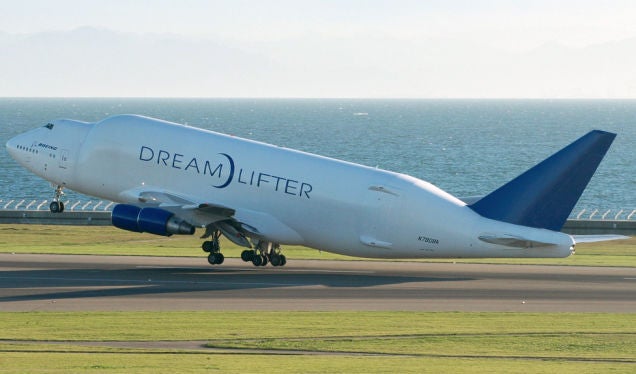
September 9, 2006 – The first flight of the Boeing 747 Dreamlifter, a specially modified 747-400 that was developed by Boeing to transport sections of the Boeing 787 Dreamliner for final assembly. Formerly known as the Large Cargo Freighter (LCF), the Dreamlifter was modified in Taiwan by Evergreen Aviation Technologies and has a cargo compartment that can accommodate 65,000 cubic feet of cargo making it the largest volume in the world. The Dreamlifter can hold triple the volume of the Boeing 747-400F freighter and has an 803,001 pound maximum takeoff weight (MTOW). The Dreamlifter entered service in 2007 and 4 have been built. It is flown exclusively by Boeing, with no other commercial customers. (Photo by Yamaguchi Yoshiaki via Wikimedia Commons )
!!! UNKNOWN CONTENT TYPE !!!
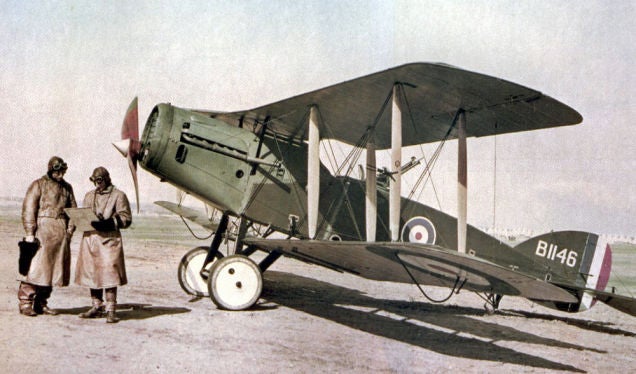
September 9, 1916 – The first flight of the Bristol F.2 Fighter,
a two-seat fighter and reconnaissance aircraft developed for the Royal Flying Corps during WWI. Unlike most two-seat reconnaissance aircraft, which were not known for their dogfighting skills, the F.2 proved to be very agile and was capable of mixing with single-seat enemy fighters. The F.2 was known for making attacks with its forward-firing machine guns while the observer in the rear seat provided cover with a swiveling machine gun. Popularly known as the “Brisfit” or “Biff,” the F.2 saw its first action in April 1917 as part of the
Battle of Arras
, and fought throughout the rest of the war. Production continued until 1927, with many surplus aircraft modified for civilian use. A total of 5,329 were built.
(Australian Government photo)
!!! UNKNOWN CONTENT TYPE !!!
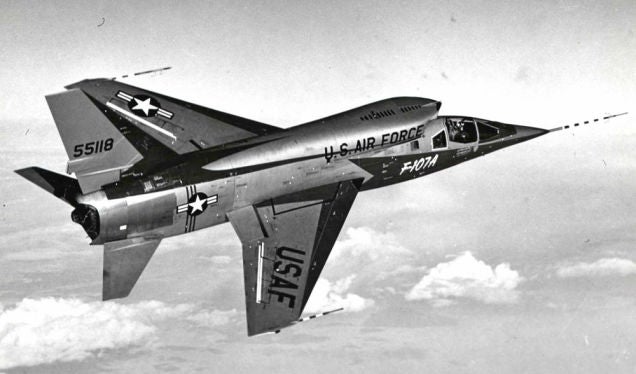
September 10, 1956 – The first flight of the North American F-107,
a fighter-bomber developed for the US Air Force based on the
North American F-100 Super Sabre
. The F-107 was initially designated the F-100B, but soon became so heavily modified that the Air Force gave it a new designation. In order to house the radar, the Super Sabre’s nose air intake was moved to the top of the aircraft, which caused some concern among pilots who might be forced to eject. It also severely limited rearward visibility, but this wasn’t considered a problem since the YF-107 relied on missiles fired from beyond visual range. North American built 3 prototypes, but it lost an Air Force competition against the
Republic F-105 Thunderchief
and never entered production. The first two prototypes are housed in the
Pima Air and Space Museum
in Arizona and the
National Museum of the United States Air Force
in Ohio, while the third was scrapped in the 1960s.
(Air Force photo)
!!! UNKNOWN CONTENT TYPE !!!
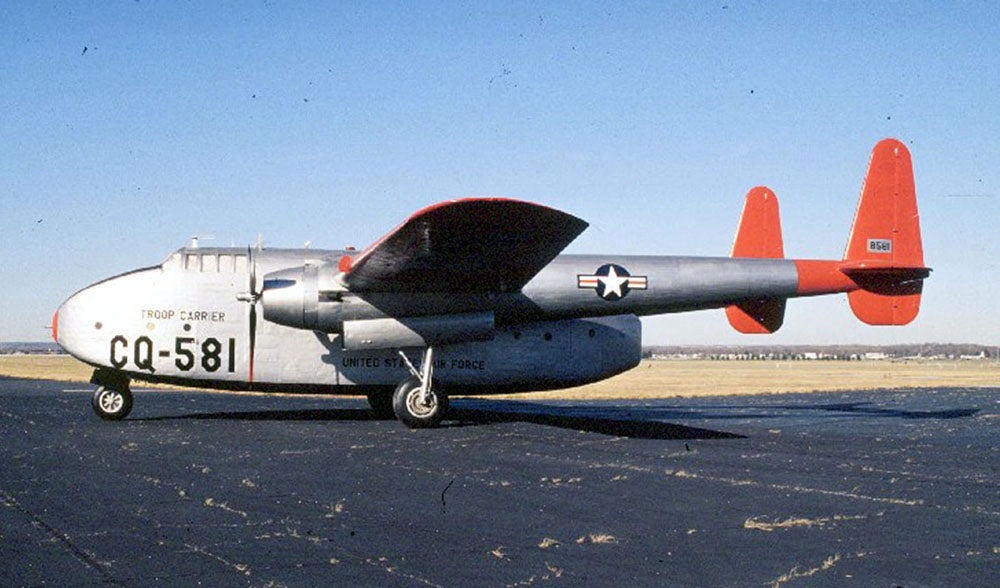
September 10, 1944 – The first flight of the Fairchild C-82 Packet , a cargo and troop transport developed by Fairchild Aircraft to replace the Curtiss C-46 Commando and Douglas C-47 Dakota . To preserve critical wartime supplies, the Packet was originally intended to be built from plywood and steel, but design requirements dictated a switch to all-metal construction. Delivery to the US Army Air Forces did not take place until June 1945, so its use in WWII was limited. Nevertheless, it did take part in cargo and troop carrying missions, was also used as a paratroop transport and glider tug. Following the war, its payload and rugged construction made it popular with civilian operators. Though only 223 were produced, the Packet formed the basis for the highly successful C-119 Flying Boxcar which entered service in 1949. (US Air Force photo)
!!! UNKNOWN CONTENT TYPE !!!
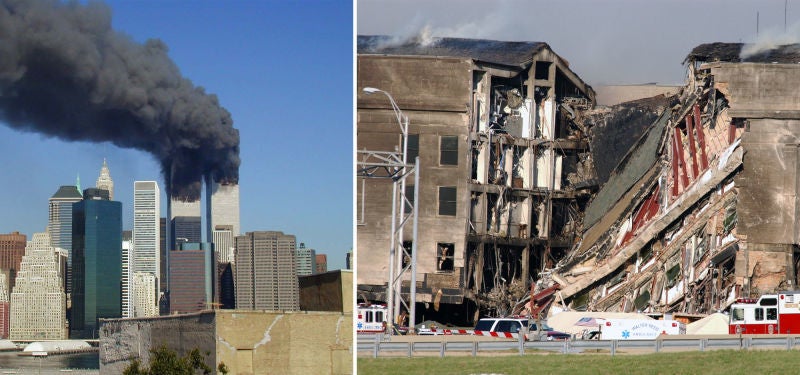
September 11, 2001 – Terrorists hijack four transcontinental airliner in a coordinated attack on the United States.
Four teams of hijackers boarded flights leaving from Boston, Washington DC, and Newark and hijacked American Airlines Flight 11, United Airlines Flight 175, American Airlines Flight 77, and United Airlines Flight 93. After killing or otherwise subduing the flight crew and herding the passengers to the back of the planes, the terrorists flew the first two aircraft into each of the twin towers of the World Trade Center in New York City, and crashed the third airliner into the Pentagon in Washington, DC. However, passengers on board Flight 93 fought back against the hijackers. During the struggle, the hijacker pilot crashed the airliner into a field near Shanksville, Pennsylvania, just minutes from Washington, DC. It is believed that their intended target was the White House or the US Capitol. In all, 2,977 people were killed in the September 11 attacks (a number which does not include the 19 hijackers). Of that total, 246 were on board the four airliners hijacked that day.
(WTC photo by Michael Foran via
Wikimedia Commons
. Pentagon photo by US Navy)
For a full account of the events of this day, see This Date in Aviation History: September 11, 2001
!!! UNKNOWN CONTENT TYPE !!!
!!! UNKNOWN CONTENT TYPE !!!
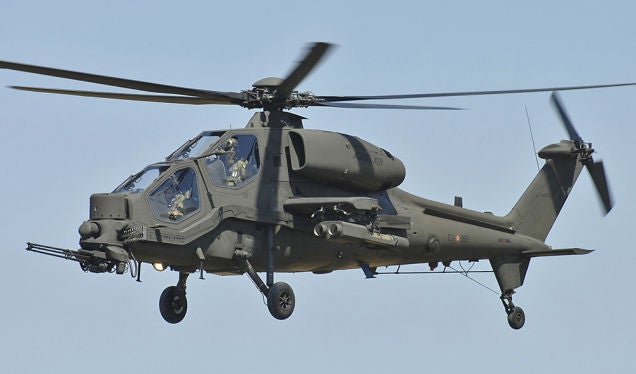
September 11, 1983 – The first flight of the Agusta A129 Mangusta,
an armed attack helicopter originally designed by Agusta (now
AgustaWestland
) and the first dedicated attack helicopter to be designed and produced in Europe. Comparable to the American
Boeing AH-64 Apache
, though using a higher level of computer automation, the Mangusta (Mongoose) is armed with a single 20mm three-barrel
M197
Gatling cannon in a chin turret, and can be armed with up to 76 unguided rockets as well as
Hellfire
or
BGM-71 TOW
anti-tank missiles. It can also carry air-to-air missiles such as the
AIM-92 Stinge
r or
Mistral
. The A129 entered service with the Italian Army in 1990, and has seen action in Macedonia, Iraq and Afghanistan. Sixty have been built, and the Mangusta remains in production.
(Photo by Aldo Bidini via
Wikimedia Commons
)
!!! UNKNOWN CONTENT TYPE !!!
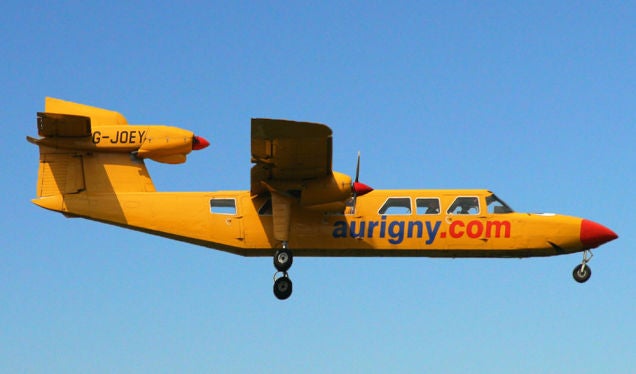
September 11, 1970 – The first flight of the Britten-Norman Trislander,
an 18-seat passenger and utility
short takeoff and landing
(STOL) aircraft produced on the Isle of Wight and in Romania from 1970-1980. Designed by John Britten and
Desmond Norman
, the Trislander is powered by three
Lycoming O-540
six-cylinder piston engines, with one mounted in the tail, and has a top speed of 180 mph. The Trislander was developed from the twin-engine
Britten-Norman Islander
, and its STOL capabilities allow it to take off from landing strips less than 500 feet long. It entered service with Aurigny Air Services in 1971, and a total of 72 were built.
(Photo by Ronhjones via
Wikimedia Commons
)
!!! UNKNOWN CONTENT TYPE !!!
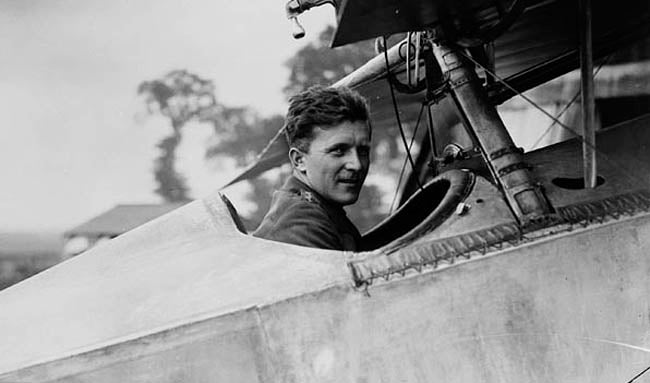
September 11, 1956 – The death of William Avery “Billy” Bishop. Bishop was born on February 8, 1894 in Owen Sound, Ontario, Canada and made his first “flight” in a plane he constructed from wooden crates, cardboard and string that he launched from the top of his three-story house. When WWI broke out, Bishop served with the 7th Canadian Mounted Rifles, honing his skills as a marksman, before transferring to the Royal Flying Corps, first as an observer, then received his pilot’s wings in 1916. By the end of the war, Bishop was credited with 72 victories, making him the top Canadian ace of WWI. During WWII, Bishop served as the Director of the Royal Canadian Air Force in charge of recruitment, and his fame led so many to apply as pilots many were turned away. His decorations include the Victoria Cross , Distinguished Service Order & Bar, Military Cross , Distinguished Flying Cross , légion d’honneur and the Croix de Guerre with palm. (UK Government photo)
!!! UNKNOWN CONTENT TYPE !!!

September 11, 1946 – The first flight of the North American FJ-1 Fury,
the first operational jet-powered fighter to enter service with the US Navy. The wing and tail were derived from the
North American P-51 Mustang
, and it was powered by a single
Allison J35
turbojet engine that gave it a top speed of 547 mph. The FJ-1 entered service in 1947, and made the Navy’s first operational carrier landing at sea aboard the
USS Boxer
(CV-21) in 1948. With the rapid pace of fighter development in that era, the transition to swept-wing fighters quickly rendered the FJ-1 obsolete, and only 31 were produced. However, the Fury was soon developed into the
North American F-86 Sabre
, one of the most successful fighters of the 195os.
(US Navy photo)
!!! UNKNOWN CONTENT TYPE !!!
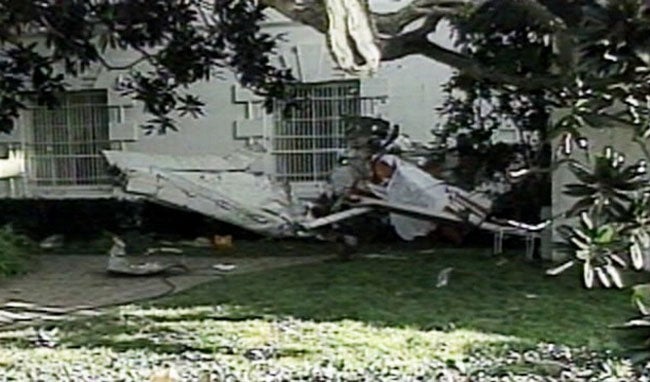
September 12, 1994 – Frank Corder deliberately crashes a plane on the White House lawn. Corder, a former US Army soldier and truck driver, was distraught, depressed and suicidal after his wife left him, and friends indicated that he was only seeking publicity and was perhaps inspired by the flight into Moscow’s Red Square by Mathias Rust. Highly intoxicated, Corder stole a Cessna 150 (N1405Q) from Aldino Airport in Maryland and flew to the White House. Though detected minutes before the crash by radar operators at National Airport, Corder managed to crash the small aircraft on the South Lawn of the White House, killing himself. Corder had stated that he bore no animus toward President Clinton, and the president was unhurt. Rumors persist that the White House is defended by surface-to-air missiles, though the Secret Service has neither confirmed nor denied their existence, and none were fired at the aircraft. The incident led to a significant reevaluation of security procedures. (ABC News photo)
!!! UNKNOWN CONTENT TYPE !!!
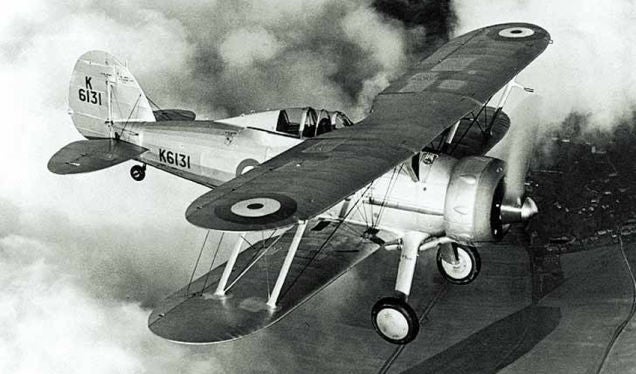
September 12, 1934 – The first flight of the Gloster Gladiator, a biplane fighter and the last biplane to be flown by the Royal Air Force and Fleet Air Arm. Though considered obsolete at the start of WWII by more modern monoplane fighter designs, the Gladiator nonetheless served in combat in all theaters early in the war, with a few export fighters even serving the Axis forces. The Gladiator entered service in 1937, though it was soon replaced in frontline operations by the Hawker Hurricane and Supermarine Spitfire . Also capable of operating from carriers, many Gladiators were redeployed to serve as cover for British trade routes, particularly in the Mediterranean Sea, and was last flown in combat by the Finnish Air Force. A total of 747 were built. (UK Government photo)
Those old Gladiators aren’t made of stressed steel like a Hurricane or a Spit. They have taut canvas wings, covered with magnificently inflammable dope, and underneath there are hundreds of small thin sticks, the kind you put under the logs for kindling, only these are drier and thinner. If a clever man said, ‘I am going to build a big thing that will burn better and quicker than anything else in the world,’ and if he applied himself diligently to his task, he would probably finish up by building something very like a Gladiator. — Roald Dahl
!!! UNKNOWN CONTENT TYPE !!!
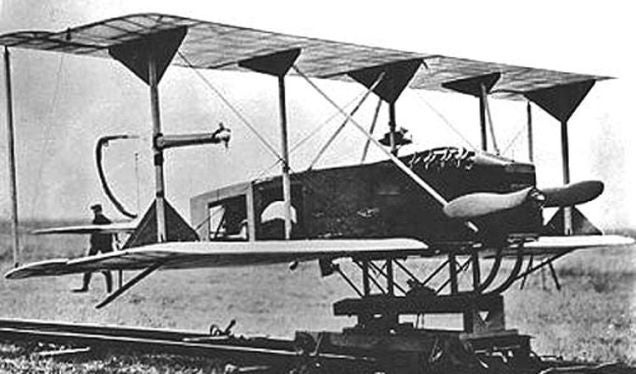
September 12, 1916 – The first flight of the Hewitt-Sperry Automatic Airplane,
a project to develop a pilotless aerial torpedo or flying bomb and the progenitor of the modern
cruise missile
.
Elmer Sperry
is credited with developing the first gyroscopically-controlled autopilot system, and Sperry adapted his system to be controlled by radio. Though flight tests of the system were promising, WWI ended before the flying bomb could be perfected, and development was shelved until 1925 when the US Navy took over the program.
(US Government photo)
!!! UNKNOWN CONTENT TYPE !!!
!!! UNKNOWN CONTENT TYPE !!!
!!! UNKNOWN CONTENT TYPE !!!
!!! UNKNOWN CONTENT TYPE !!!
!!! UNKNOWN CONTENT TYPE !!!
!!! UNKNOWN CONTENT TYPE !!!
!!! UNKNOWN CONTENT TYPE !!!
If you enjoy these Aviation History posts, please let me know in the comments. And if you missed any of the past articles, you can find them all at Planelopnik History . You can also find more stories about aviation and aviators at Wingspan and Planes You’ve (Probably) Never Heard Of .
!!! UNKNOWN CONTENT TYPE !!!
 "facw" (facw)
"facw" (facw)
09/12/2017 at 13:02, STARS: 2
Worth noting that beyond the 60 A129s you mention, additional aircraft (Wikipedia says 21) have been license-built in Turkey as the T129:
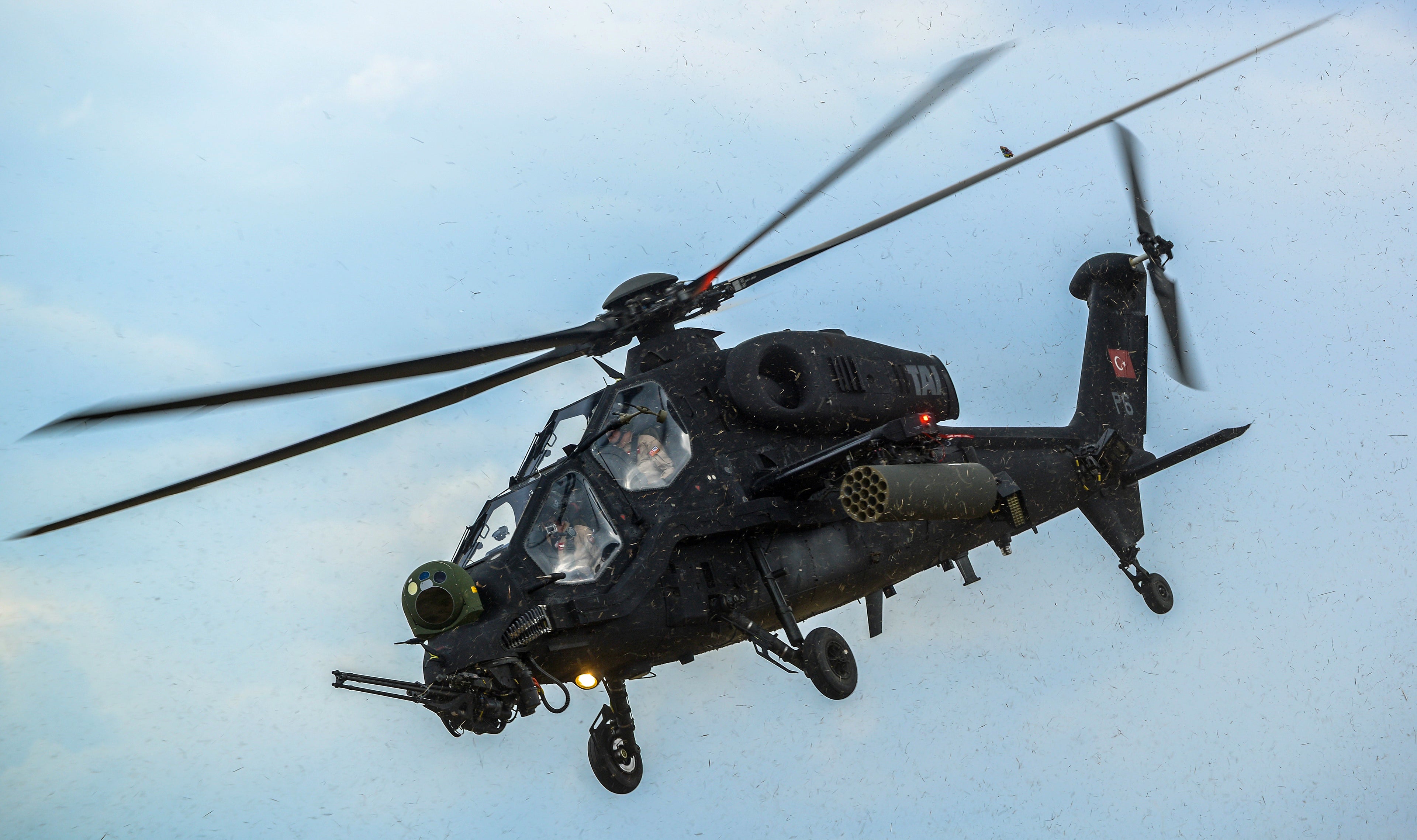
 "Chariotoflove" (chariotoflove)
"Chariotoflove" (chariotoflove)
09/12/2017 at 13:11, STARS: 1
Dahl was a genius.
 "RamblinRover Luxury-Yacht" (ramblininexile)
"RamblinRover Luxury-Yacht" (ramblininexile)
09/12/2017 at 13:12, STARS: 0
The Trislander stands as a monument to the art of making a small plane that will never be mistaken for a Piper or Cessna product. Ever. Other contenders would include the Republic SeaBee. It looks like the Trislander doesn’t even have more than four film/TV appearances .
I’m not sure if the F-107 technically counts for Double Bubble Society membership, nor the Dreamlifter. Although the Dreamlifter brings a few other things to mind...


09/12/2017 at 13:16, STARS: 1
Not really sure what it is about it, but I really like that Rafael Toplite III sensor ball. I’m surprised it’s not an MMS like the Tiger’s Osiris though.

 "ttyymmnn" (ttyymmnn)
"ttyymmnn" (ttyymmnn)
09/12/2017 at 13:20, STARS: 1
The Trislander is brutally functional. It would seem that practically zero consideration was given to aesthetics. But the result is such an effective design that it makes no difference that it won’t win any beauty contests.
No, F-107 is not a double bubble, just a really, really big fuselage. I saw one of them at the Dayton museum, and it looked like it had the entire flight manual stenciled on the side.

Also, 10 extra Internet Points for the Young Frankenstein reference. I love that movie.
 "ttyymmnn" (ttyymmnn)
"ttyymmnn" (ttyymmnn)
09/12/2017 at 13:32, STARS: 1
He wrote a number of short stories about his wartime flying experiences. They are collected in Switch Bitch (not sure what the title means) and Over To You . I have one of them somewhere, and remember one story to be pretty dark. It was about a pilot who died in a crash but then had an out of body experience. But even in Dahl’s children’s books, there is a lot of dark stuff going on. The scene in Willy Wonka, which Gene Wilder brought off with absolute brilliance, is one such example.
!!! UNKNOWN CONTENT TYPE !!!
 "Chariotoflove" (chariotoflove)
"Chariotoflove" (chariotoflove)
09/12/2017 at 13:41, STARS: 1
Agreed about he darkness. Sometimes it’s pretty disturbing. But then, the guy did have some dark experiences in life.
 "Spoon II" (Spoon_II)
"Spoon II" (Spoon_II)
09/12/2017 at 13:50, STARS: 0
These articles are excellent! Also, that rocket wing is straight up awesome!
 "Turbineguy: Nom de Zoom" (will-alib)
"Turbineguy: Nom de Zoom" (will-alib)
09/12/2017 at 14:22, STARS: 2
Like the Gladiator, the Fairey Swordfish was also considered obsolete when the war began. But don’t tell that to the crew of the Bismark. That’s just salt in the wound.
 "ttyymmnn" (ttyymmnn)
"ttyymmnn" (ttyymmnn)
09/12/2017 at 14:35, STARS: 0
The story of the sinking makes for a compelling read.
Around 400 men were now in the water; Dorsetshire and the destroyer Maori moved in and lowered ropes to pull the survivors aboard. At 11:40, Dorsetshire ’s captain ordered the rescue effort abandoned after lookouts spotted what they thought was a U-boat. Dorsetshire had rescued 85 men and Maori had picked up 25 by the time they left the scene. A U-boat later reached the survivors and found three men, and a German trawler rescued another two. One of the men picked up by the British died of his wounds the following day. Out of a crew of over 2,200 men, only 114 survived. (Wiki)
 "Yowen - not necessarily not spaghetti and meatballs" (yowen)
"Yowen - not necessarily not spaghetti and meatballs" (yowen)
09/12/2017 at 16:39, STARS: 0
Interestingly still operated in Guyana and Puerto Rico